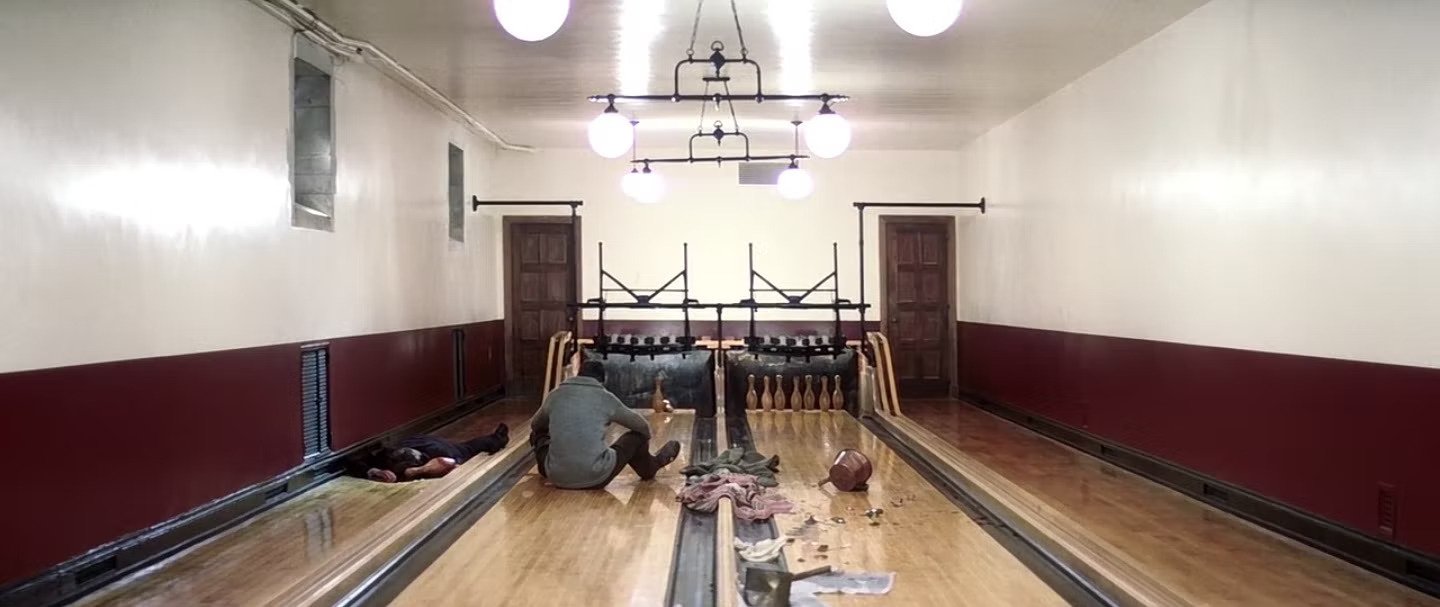The Mountaintop of 70mm/Why You Can’t Beat Kubrick by Craig Hammill
If anyone says any of the current digital projection formats are better than 70mm film, they’re lying to you.
Or don’t know what they’re talking about.
Or haven’t recently seen a movie shot on 70mm film, projected on 70mm film.
Strong words, I know. And maybe not even completely technically accurate words. It’s quite possible folks raised in the digital age vastly prefer digital. Certainly, the digital format, just like film before it, will only get better as technology advances.
All I know is that watching our three 70MM titles this past weekend at our second annual 70MM Palm Springs Getaway-Paul Thomas Anderson’s The Master, James Cameron’s Titanic (shot on Super 35mm, blown up to 70mm), Stanley Kubrick’s 2001: A Space Odyssey-was another revelation.
Just to get a little history out there, for whatever it’s worth, most movies from their inception in the late 1800’s through roughly 2012 (just a decade ago) were shot and projected on 35mm film. Each physical frame roughly the size of an adult thumb.
70mm (twice the area of 35mm film-two thumbs-thus the best image resolution and sound possible) actually has existed since the dawn of movies.
Someone shot the Henley Regatta of 1894 or so on 70MM film. But 70mm film (always a costly format) became the go-to EPIC format in the 1950’s as a way to combat the threat of television.
Yes, you could watch I Love Lucy from the comfort of your living room on a ten to twenty inch black and white screen. And it was great. Like a great house party. But going to see William Wyler’s Ben Hur in a movie palace projected on 70mm film was like attending Carnival in Rio De Janeiro.
Overpowering. Stunning. Full of color and music and sound and texture.
Comprable to seeing Vincent Van Gogh’s great paintings in a textbook (TV or 35mm) versus in real life at the museum (70mm).
Movies are still being shot on 70mm. Christopher Nolan’s Dunkirk was shot entirely on 70mm as is his upcoming Oppenheimer. Jordan Peele shot sequences of 2022’s Nope on 70mm. Sequences in the Mission Impossible series have been shot on IMAX and/or 70mm (comparable film formats).
What’s funny to me is that prior to hosting these 70mm festivals, I never (as a filmmaker) had a strong desire to shoot on 70mm. I admired it. But it didn’t sing to me. 35mm was enough joy and excitement for me (and usually still is).
But now, I realize, I DO have an idea that I would love to shoot on 70mm. Because you can feel, immediately, that 70mm is a treat. It’s a Michelangelo Sistine Chapel level format. It’s a revelation. It’s an amazing gift you can give your audience.
I pair this first part of this blog with the second: namely that Stanley Kubrick’s 1968 2001: A Space Odyssey, still the platinum level achievement in 70mm (just edging out David Lean’s Lawrence of Arabia which almost deserves co-first place status) is unbeatable.
Watching this speculative sci-fi masterpiece about the mysterious moments that unseen alien intelligence interacts with human and computer intelligence setting off a journey from earth to the moon to Jupiter, I felt that even 55 years later, no movie has matched 2001’s story, style, cinema, or use of the 70mm format.
And no movie or moviemaker should even try.
Let me explain myself.
I’m not saying that 2001 is so untouchable that no moviemaker should try to make something great or wildly impossibly ambitious on 70mm. Filmmakers absolutely should try. And it’s my hope and prayer that one day a moviemaker does make something that takes its seat on the Mount Olympus of 70mm movies.
But I am saying that it is probably not a great starting point to try and chase Kubrick or 2001: A Space Odyssey specifically. You just can’t beat Kubrick. Just as you probably can’t beat Kurosawa at Seven Samurai or even David Lean at Lawrence of Arabia.
Every now and then I see a movie where you can feel Papa Kubrick’s hand on the shoulder of the moviemaker. Strangely, I feel it a bit in Martin Scorsese’s Shutter Island (specifically the early scenes heading to the sanitarium and the World War II flashback sequences). It can be felt a bit in Paul Thomas Anderson’s There Will Be Blood, specifically the final scene between Daniel Day Lewis and Paul Dano which feels as if Kubrick and John Huston co-wrote it with Anderson. You can also see it in early Keith Gordon movies like 1988’s The Chocolate War with their symmetrical framing and zooming. And of course Spielberg’s AI was an actual Kubrick-Spielberg collaboration where some shots clearly feel designed/storyboarded prepped by Kubrick, others Spielberg.
All of these, in my opinion, are really good to absolutely great movies. I’m not knocking Monsieurs Scorsese, Anderson, Gordon, or Spielberg. At all. We should be so lucky to have the talent these moviemakers have.
And we all have to sweat out our influences one way or another. It’s very rare a moviemaker comes out fully formed and original and confident in their first feature. Even Kubrick’s early works show the influences of Ophuls and Dryer and others (which he openly admitted).
Ultimately, my realization watching 2001, is simply that that iteration of speculative sci-fi filmmaking is so sui generis and singular, it is unlikely to be topped.
And chasing Kubrick’s way of making movies would be like chasing the dragon’s tail. You’ll probably end up charred with a pissed off dragon.
The real challenge is to have an idea hit you that you develop, test, experiment, revise that feels its own. And then, you take your experience, craft, talent (Kubrick after all didn’t attempt 2001 until over 15 years into his own filmmaking journey) and give it your all.
As I write this, the platitudinous aphoristic quality of the above statement sounds like it can only illicit a sort of “No, duh” response from any reader.
And maybe it’s not as helpful or even insightful as I want it to be.
But I can’t escape the feeling that the sooner an artist dares to take chances with ideas, thoughts, ways of storytelling that are singularly in their voice, the sooner and faster they get further down the road.
Kubrick seemed to know this. As from Dr. Strangelove (1963) on, a Kubrick movie only ever felt like a Kubrick movie. Maybe he was cribbing sometimes (as he did in The Shining when he repurposed a horrifying scene from the silent masterpiece The Phantom Carriage of a crazed father using an ax to chop down a door to get to his terrified wife and children) but those influences were so thoroughly absorbed in Kubrick’s bloodstream as to become Kubrickian in their expression.
Whatever your name is. Let your masterpieces be synonymous and singular to your name.
Craig Hammill is the founder.programmer of Secret Movie Club.



